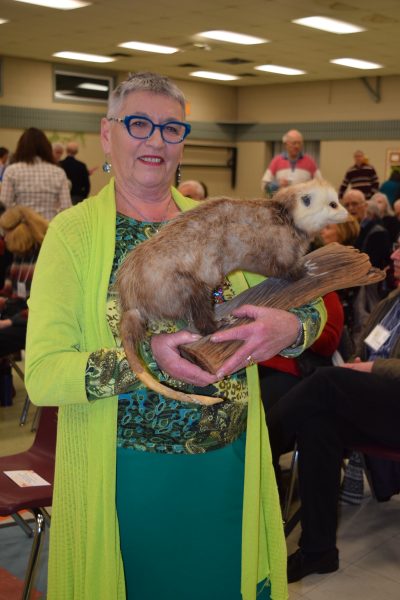
By Tristan Marks
NewsNow
A vast forest landscape once stretched across what is now called Niagara, Hamilton and beyond. This Carolinian Forest, so-called since it used to stretch as far down as the Carolinas in the United States, was shelter and provider for countless native species.
As the area became settled more and more by colonists from Europe, the ecosystem was pushed back and clear cut. Today, around only 10% of the Carolinian Forest remains.
Carolinian gardening expert and member of the Carolinian Canada Coalition, Joanne Tunnicliffe, spoke at the Grimsby Garden Club’s first meeting of the year last month, held at the Livingston Activity Centre. She shared the history of the once-widespread Carolinian Forest, explained its central importance to the local ecosystem, and even explained to the gathered club members how they can help preserve a little patch of it on their own property.
“One carolinian oak can provide food for 500 species,” said Tunnicliffe, who added that right now that species of oak is dying off due to disease.
Tunnicliffe explained that these trees and other plants play an important role by feeding animals. As an example, she talked about various species of caterpillar who feed off native Carolinian plants and, in turn, feed native birds like chickadees.
“It takes up to several thousand caterpillars to feed the clutch of a single nest,” Tunnicliffe explained. “Just think of how many chickadees you see and multiply that number in your head. No Carolinian Forest means no birds.”
The reason for wanting to grow a carolinian garden, Tunnicliffe argued, is to help sustain this network of plants and animals. She also emphasized that, while gardeners should avoid planting invasive species due to their disruptive effect on the local environment, they should also avoid “introduced species”. Tunnicliffe defined these as being non-native species that, while not actively invasive, also provide little to no benefit to the local ecosystem.
“You will be providing far more food with a carolinian garden,” she said. “With the right seeds, nuts and conditions, you might see flying squirrels, weasels and even turkeys.”
Tunnicliffe finished her talk by providing some information on where interested gardeners can get seeds and starter plants for their own carolinian garden. She explained that the Carolinian Canada organization has a list of growers who sell local species on their website, caroliniancanada.ca. She also added that more and more nurseries are beginning to offer Carolinian species.
“The goal of all Carolinian societies is to return to 30 per cent coverage,” said Tunnicliffe. “In the last five years, people have been going in asking for Carolinian plants. It really takes a crisis for things to change.”

